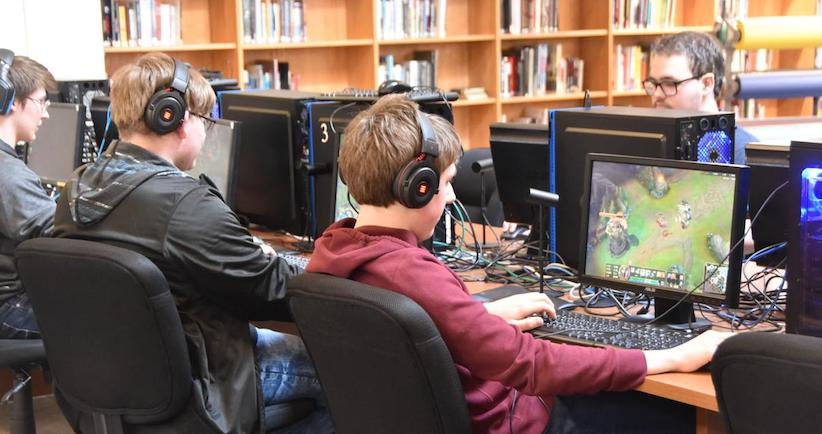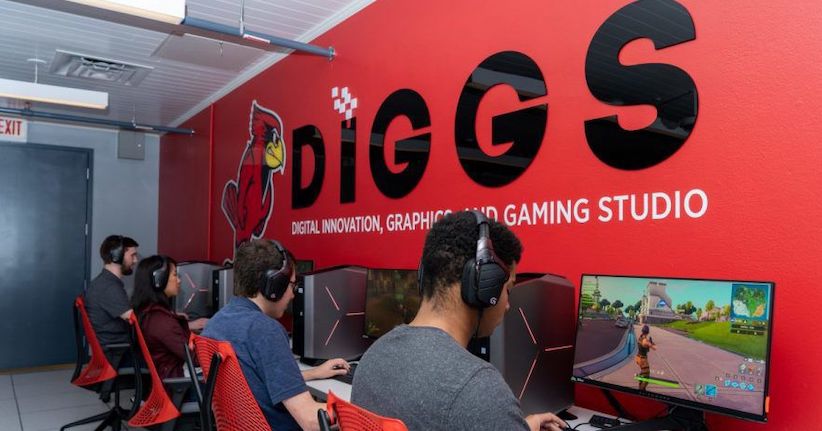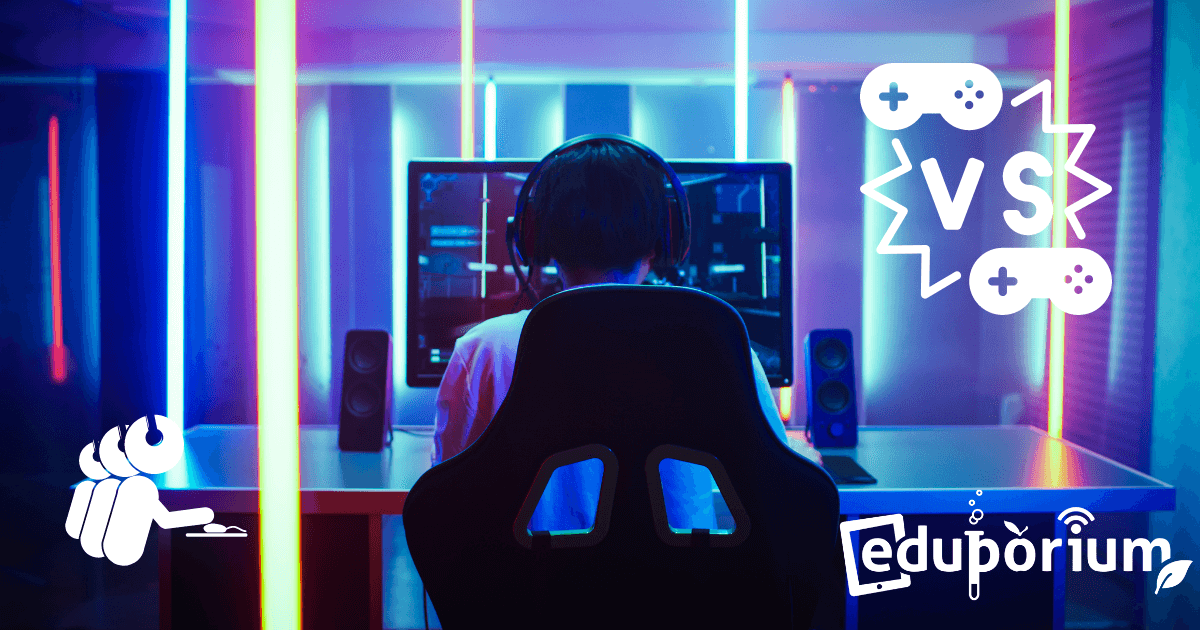The world of esports is fascinating, developing, and it's certainly boomed in the last couple years. Esports refers to the team-based playing of popular video games between opposing sides with mainstream gaming consoles. It's created an entirely new (and successful) industry and even had a big effect on K-12 students. Just like they'd participate in traditional school sports, like baseball, football or basketball, creating school esports teams as part of interscholastic leagues is now incredibly common and something students have led in many cases. And, similarly to receiving athletic scholarships to play collegiate sports, students can now do the same with esports—just one of the benefits these programs provide.
Esports in Education
It’s very common to see esports programs in colleges and more and more common in high schools as well. Esports involves more than giving students something to do if they're not playing traditional sports; it helps them build bonds and foster the same sense of teamwork and brotherhood that they'd get from playing on traditional teams. Students can learn important values, like sportsmanship, communication, and more from taking part in esports competitions and both school teachers and athletic directors have taken notice. Also, esports classes in schools continue to sprout up—not necessarily helping students learn how to play the games but teaching them about esports, including potentially creating a future built on these opportunities.
Initial factors for educators to consider.
Most high school esports initiatives take place after school and meetings, practices, and matches typically occur in a dedicated space. Some program leaders might work with district officials to design state-of-the-art spaces for esports and, over time, more of these should pop up. For students to consider these esports competitions legitimate and to create an engaging environment, many esports coaches advocate for higher end equipment, like computers with stronger processing power, large monitors so everybody is able to see the games unfold on the screen, reliable headphones, and up-to-date esports mice and keyboards. Like we said, it’s much better for students if they have the equipment—at least based on what we hear.
Preparing for roles in key industries.
Besides helping students become part of the team and, in some cases, help them pay for college, esports can benefit them in additional areas. Typically, high school esports consists of six players on a varsity team and six on JV. However, there could be dozens of students who want to be part of the program. While there are only so many spots available, there are other roles for students within the team so they can still develop valuable skills for the future. One of the most common ways esports connects to future careers is through marketing. Many teams and players rely on social media to publicize events and results and perhaps even for recruiting. Many teams have somebody solely for marketing but other opportunities include streaming, development, broadcasting, event organization, journalism, and more.
Academic and Future Benefits of Esports
Don’t get us wrong, the focal point of interscholastic esports competition is allowing students to participate in a new team sport but that’s certainly not the only one. Esports can also have an educational side as well, particularly in helping students with developing soft skills. It can also improve academic performance and social-emotional well-being for students who felt isolated prior to joining the esports program. Esports can help them boost social skills and peer connections. Many kids who once couldn’t wait to leave school are often now excited about participating in esports after school. Some school and district leaders have even said that students who participate in interscholastic competitions have decreased tardiness and truancy.
Communication and connections in esports.
In some cases, school leaders require esports athletes to maintain a certain GPA to participate in activities, which is sometimes higher than what they require in traditional sports. This, of course, can help to motivate them to strive for greater success in the classroom. Some coaches have also created connections between students developing gaming strategies and theories related to science, math, and technology. And, gamers often make quick decisions and may need instantaneous input from teammates, creating a need for strong communication skills. But, they also need to communicate opinions logically and concisely and, when they support their stance with sound (even scientifically backed evidence), it can help the team immensely.
Some benefits of esports in schools.
Esports can also help students gain leadership and problem-solving skills, which are useful in college and careers. Other ways that esports participation may connect to future success include students developing marketing skills, which we’ve mentioned, graphic design skills, fundraising skills, and even strategic skills. Esports and gaming can also help students improve their hand-eye coordination, brain function, decision-making skills, rapid calculation, and spatial reasoning skills. And, as some might know, the very best high school esports players can potentially earn scholarships and play in college. They could wind up getting recruited and receive money towards furthering their education at a good school—just some of the ways that playing esports can help students.

Starting a K-12 Esports Program
Next, we’ll touch on more tips and strategies school technology personnel use when starting an esports program. Often, it boils down to securing a space, finding affordable but powerful gaming equipment, and choosing a coach. If a tech director is willing to tie these all together, generating student interest could then be an easy part. If you’ve seen Field of Dreams, it’s a little like the if you build it, they will come quote. Even if administrators are willing to give esports a chance in their schools, however, others must approve it. They would need to appeal to the superintendent or school board for funding and permission. Before doing that, they need a plan regarding the gaming equipment, when and where students will be playing, who they will be playing against, who’s coaching, and how many kids.
More good things about esports in schools.
Especially today, not all students have the desire for high school sports but many still have other interests. For many, that’s video games and, with a chance to turn this passion into a competitive and team-oriented endeavor, many jump at it. Knowing this, educators can also justify esports as a potential way of preparing students for careers and helping them get into college, which could make funding and approval more likely. School leaders should also decide whether the esports program will start as an informal club or if students might jump right in to competitive play against teams from other schools—perhaps as a varsity sport. Also, be mindful of how students of different ages would like the program to take shape, the games they might want to play, and how much supervision they need.
Scheduling and putting students first.
Once you find a coach, they'd work with the principal or athletic director to set practice schedules. During a season, teams might practice once a week with games once a week for two total days of esports. Before their season starts or if esports is just an informal club, two or three days each week is ideal. Some esports athletes practice five days a week, however, for up to two hours a day, which is at or near the limit for most sports teams. Some coaches also note how it’s important for them and team captains to set limits for their players. These include making sure they’re not looking at screens too much and not practicing or playing during class time. And, as always, as student-athletes, the student portion of that phrase comes first.
Some Pros and Cons of Esports in Schools
We’re still learning a lot about esports in general, including its impact on education at the K-12 level. The benefits are seemingly noteworthy, including fostering teamwork, improving academic performance, and competing collaboratively. The opportunity to earn a college scholarship doesn’t sound too bad, either. Esports is about more than playing games, however. We’ve talked about secondary career opportunities within the industry and leaders of interscholastic esports programs should make sure that children know about them too. Learning about how careers like an esports game designer, marketer, event coordinator, “shoutcaster,” storyboard writer, or animator could give them a bright future or pull even more kids in.
Positive opportunities esports creates.
Essentially, if they're not an esports player, students could still theoretically wind up on the creative side or management side. Children can also learn a lot about entrepreneurship skills by discovering more of the career opportunities associated with esports. Another benefit esports brings with it is simply getting more students involved. Asking esports coaches or school technology directors about who makes up esports programs often yields a consistent answer. They say that students on esports teams are frequently those who haven't participated in other extracurricular activities at school. Esports could attract kids who enjoy different things and the technology helps team building rather than driving solo, isolated experiences.
What some people consider to be esports cons.
Now, for some cons of esports in schools, specifically with competitions at the high school level. Esports coaches often have to prove to stakeholders that the competitions create real value for students. They also might have to navigate avoiding any violent games. The good news is that leagues are built around multiple games, including plenty that aren't violent but rather strategic. Esports leaders also have to be aware of the generalization that gaming culture is often sexist. Ensuring that sexism doesn't exist and everyone can feel fully welcome in esports clubs is something school officials must address, too. If they can identify, address, and avoid these key concerns, then esports in K-12 schools can create an entirely positive experience for everyone. And, then, it’s something that many students will keep doing.

Facts and Figures on Esports in Education
To cap off this post, we'll share some statistics published by a company called Extreme in August of 2019. They help their customers stay connected beyond networks while making communication more agile and secure. So, let’s begin. They surveyed K-12 and higher education members and, first and foremost, found esports programs were in 21 percent of schools. We suspect that number has since grown—even though schools were shut down for a while. To follow up, they asked if there were discussions about starting any esports programs and 26 percent said yes. However, 29 percent said no and just 45 percent said maybe, indicating that growth might remain fairly slow.
Insights on popular games, formality, and more.
When asked which games their esports athletes primarily play, 82 percent of respondents indicated that they played League of Legends, which is among the most popular games in K-12 and higher education. The next highest was Overwatch (52 percent) followed by Fortnite (38 percent). As for students involved, respondents estimated if there were fewer than 50 kids, between 50 and 100, or over 100. None of them said there were more than 100 and 82 percent said there were fewer than 50. This makes sense because esports is still very much in its early stages. Finally, school esports programs were 24 percent intramural (within the school) while 45 percent strictly involved competing against teams from other schools and 32 percent were a combination of both.
Sharing their messages and overcoming barriers.
The next question involved how their teams broadcast their games—not if, but how. Most said they used Twitch, followed by YouTube, Facebook Live, and Twitter. None of the respondents indicated they did not broadcast competitions. They were then asked about benefits of the program and said that it's diversified extracurricular activities. Improving overall campus experiences was second, fostering serious interest in STEM was third, and helping with student recruiting was fourth. Finally, when asked about any of the main barriers when starting a school program, the top answers were a lack of faculty or administrator interest, a lack of funds, a lack of expertise, a lack of educational value, and even a lack of student interest. So, yes, there's a lot to consider for interscholastic esports but it can be worth the challenge to create programs.
For the latest EdTech, STEM, and 21st century education news, follow us on Twitter and Instagram. Like us on Facebook, too, or sign up for our newsletter for ideas and new product offerings. If you would like to learn more about starting a program, contact us for insights on strategies, funding, and equipment.







